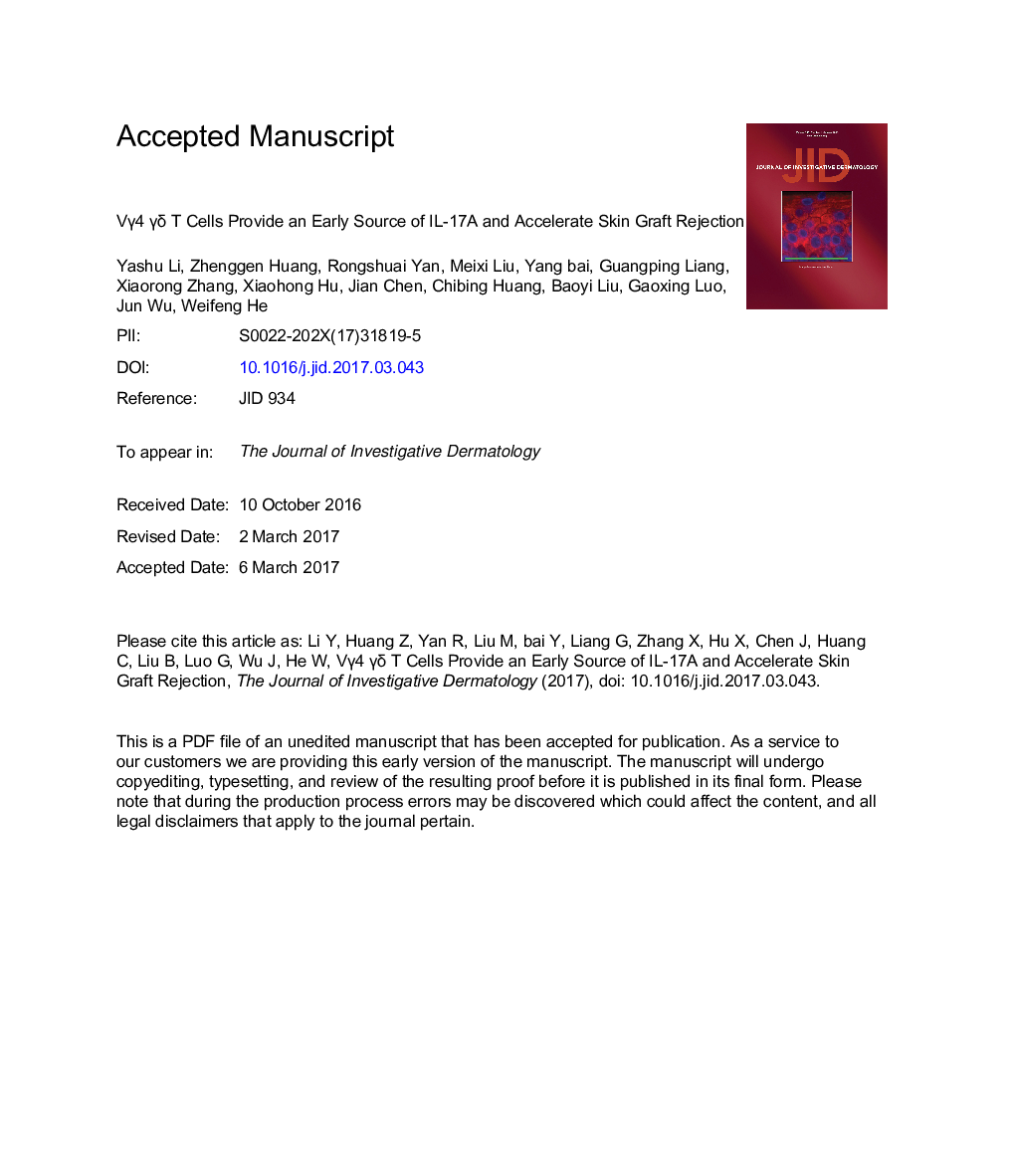| Article ID | Journal | Published Year | Pages | File Type |
|---|---|---|---|---|
| 8716256 | Journal of Investigative Dermatology | 2017 | 32 Pages |
Abstract
Activated γδ T cells have been shown to accelerate allograft rejection. However, the precise role of skin-resident γδ T cells and their subsets-Vγ5 (epidermis), Vγ1, and Vγ4 (dermis)-in skin graft rejection have not been identified. Here, using a male to female skin transplantation model, we demonstrated that Vγ4 T cells, rather than Vγ1 or Vγ5 T cells, accelerated skin graft rejection and that IL-17A was essential for Vγ4 T-cell-mediated skin graft rejection. Moreover, we found that Vγ4 T cells were required for early IL-17A production in the transplanted area, both in skin grafts and in the host epidermis around grafts. Additionally, the chemokine (C-C motif) ligand 20-chemokine receptor 6 pathway was essential for recruitment of Vγ4 T cells to the transplantation area, whereas both IL-1β and IL-23 induced IL-17A production from infiltrating cells. Lastly, Vγ4 T-cell-derived IL-17A promoted the accumulation of mature dendritic cells in draining lymph nodes to subsequently regulate αβ T-cell function after skin graft transplantation. Taken together, our data reveal that Vγ4 T cells accelerate skin graft rejection by providing an early source of IL-17A.
Keywords
Related Topics
Health Sciences
Medicine and Dentistry
Dermatology
Authors
Yashu Li, Zhenggen Huang, Rongshuai Yan, Meixi Liu, Yang Bai, Guangping Liang, Xiaorong Zhang, Xiaohong Hu, Jian Chen, Chibing Huang, Baoyi Liu, Gaoxing Luo, Jun Wu, Weifeng He,
